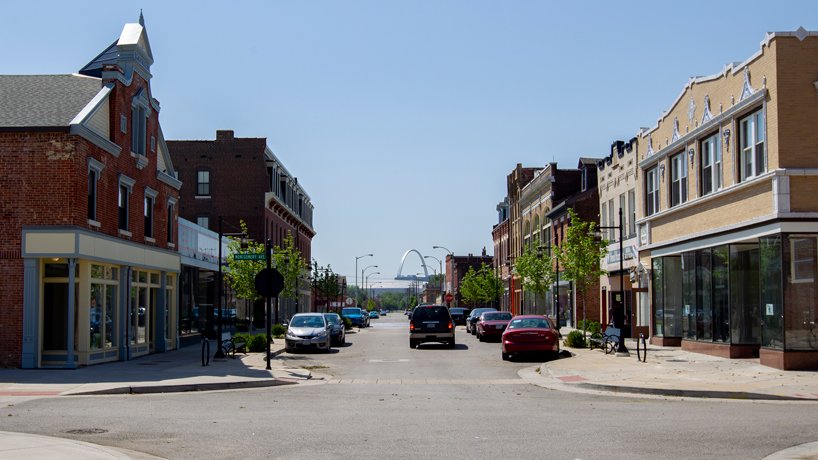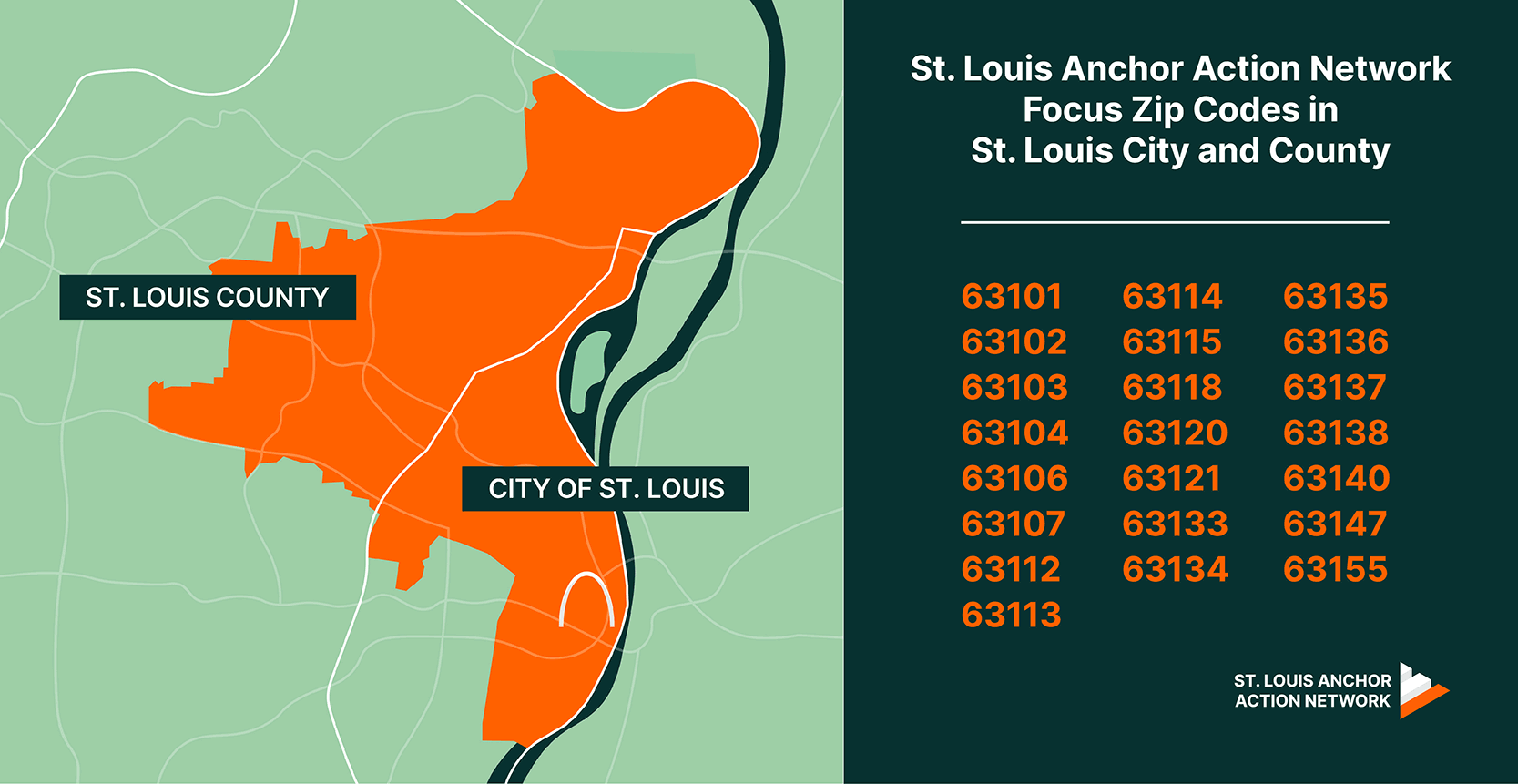
About
Stark inequities across St. Louis communities limit the potential and promise of thousands of residents. When the population in one part of the metropolitan area has been systematically marginalized, it does not just hold back those individuals and families – it holds back the entire region. St. Louis has long-standing patterns segregation, which have only been exacerbated by the COVID-19 pandemic. This pattern, exemplified by the infamous “Delmar Divide,” is the result of conscious choices in public policies and private practices in our region over many decades.
The St. Louis Anchor Action Network is a groundbreaking initiative that combines the resources of healthcare, education and the public and private sectors to create a new model for efforts to overcome the historic disinvestment. Our members include anchor institutions – large companies and organizations that serve as pillars of our regional economy – that have the resources to drive change and sustained investment. We recognize both the social and economic value of investing in our community.
Our Vision - We envision a future where everyone, everywhere in St. Louis can thrive.
Our Mission – The St. Louis Anchor Action Network drives sustained investment in St. Louis people and places, guided by a shared commitment to remove barriers to economic opportunity and create a more inclusive regional community.
Communities We Serve
As a first step, we are focused on 22 zip codes in St. Louis city and county that have been impacted by more than a century of systemic racial and spatial inequities.
This map highlights the footprint that includes communities that have 20%+ poverty rates. This geography has many assets and strong communities. However, communities throughout this footprint have faced substantial, systematic disinvestment. As of 2019, in this geography, 24.1% of the population live below the poverty line compared with 11.3% of the region. The footprint is 50% of the region’s unemployed residents live in this geography. The area has a per capita income of $22,828 compared with $35,753 for the region. And the median household income in the area is $37,261 compared to $63,705 in the region.
Our Focus Areas
Resources: Our efforts reflect the dedication of anchor institutions that recognize both the social and economic value of investing in equity. The Network works in alignment with Greater St. Louis Inc.’s 2030 Jobs Plan.
Accountability: We understand that real change requires sustained commitment, which is why we have set clear, measurable goals and commit to transparent reporting against them.
Partnership: We are committed to partnering with, listening to, and learning from community members and all others seeking to advance equitable opportunity across our region.
Justice: We seek to address more than a century of systemic inequities to support people, rejuvenate neighborhoods and build a stronger community for all.
Catalyst for Action
The Network is working on multiple fronts to be a catalyst for that action. Here is how we will help the region thrive:
Building a New Model for Overcoming Systemic Issues: We combine the resources of healthcare, education, and the public and private sectors to create a new model for efforts to overcome the systemic impact of racism and disinvestment.
Fostering Talent: Our anchor institutions are making meaningful institutional changes to support more effective hiring, retention and advancement of talent in the footprint.
Increasing Employment and Purchasing: We are initially striving to increase employment and purchasing across 22 zip codes in the St. Louis region by 10% by the end of 2023.
Rallying Community Partners: We engaged with more than 125 community partners to build our shared action plan to create and secure hiring, retention and spending opportunities.
Improving Access: We engage in outreach and recruitment to increase individuals’ access to high-quality careers, wealth, health and business opportunities.
Our Commitment by the Numbers
22 ZIP CODES: Initial investments focus on 22 zip codes in St. Louis city and county where 24.1% of the population live below the poverty line (compared with 11.3% in the region as a whole). These neighborhoods include 50% of the region’s unemployed Black community members.
10% OVER BASELINES: We strive to increase employment and purchasing in the footprint by 10% over baselines by the end of 2023.
$49.8 MILLION: A 10% increase in hiring and purchasing from currently known investment levels could result in a $49.8 million increase in direct investment in the focus geography. As the Network builds momentum, these estimates are expected to increase. (Based on data as of January 2022)
Network Members and Partners
The University of Missouri-St. Louis and Edward Jones have provided initial key leadership roles to the St. Louis Anchor Action Network by providing staffing, support and resources in our initial founding. The Network is a community designed to accelerate learning and adoption of best practices. Together, we are working to achieve measurable positive collective impact across the footprint.
Greater St. Louis, Inc. and the St. Louis Regional Business Council serve as regional partners with the Network providing guidance and supporting outreach and community engagement efforts. The Network works in coordination with Greater St. Louis, Inc.’s STL 2030 Jobs Plan and aligns with the Regional Business Council’s Black and Brown Executive Leadership program and STL.works.
Today, our Network Members include:
Ameren
BJC HealthCare
Edward Jones
Equifax
Federal Reserve Bank of St. Louis
Great Rivers Greenway
Harris-Stowe State University
Mercy
Missouri Botanical Garden
Saint Louis University
Saint Louis Zoo
SSM Health
St. Louis Community College
University of Missouri-St. Louis
Washington University in St. Louis
Webster University

